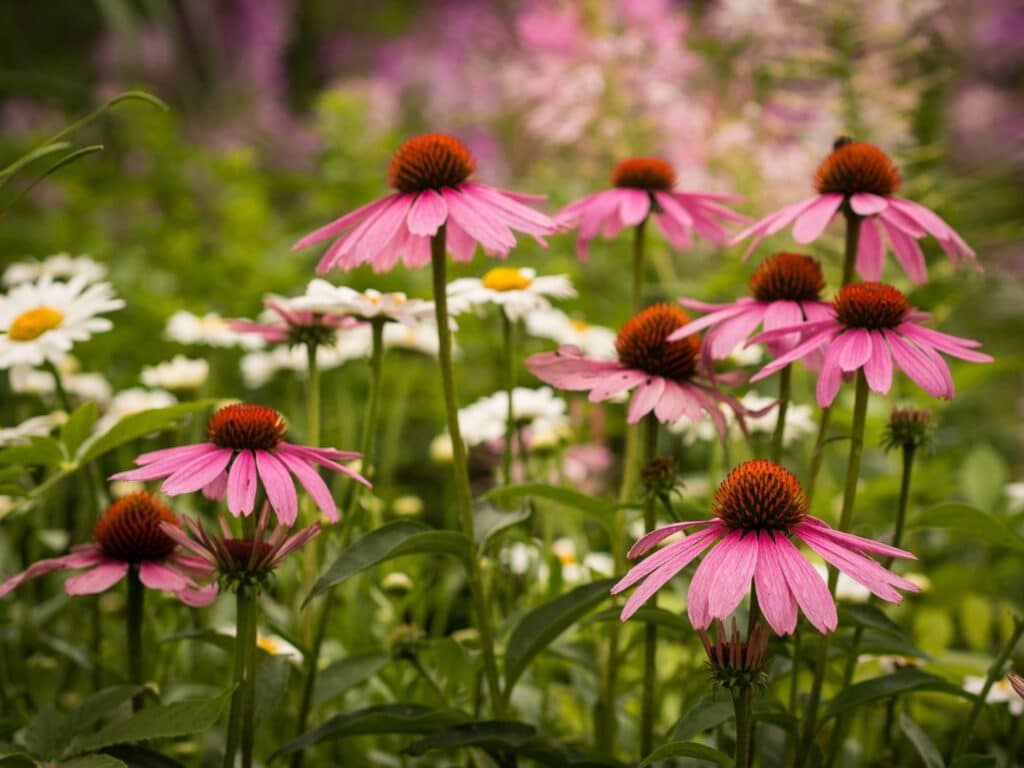Echinacea flowers (Echinacea purpurea) are beautiful plants to include in a wildflower garden because they are hardy, produce many striking flowers, and lure pollinators like bees and butterflies to your garden.
These medicinal plants look their best if paired with purple coneflower companion plants that can help fill out your garden or add more diversity with flowers that differ in size, shape, and color.
In this guide, we will look at some of the best plant species to pair with coneflowers if you want to create a striking wildflower garden filled with vivid flowers and animal life.
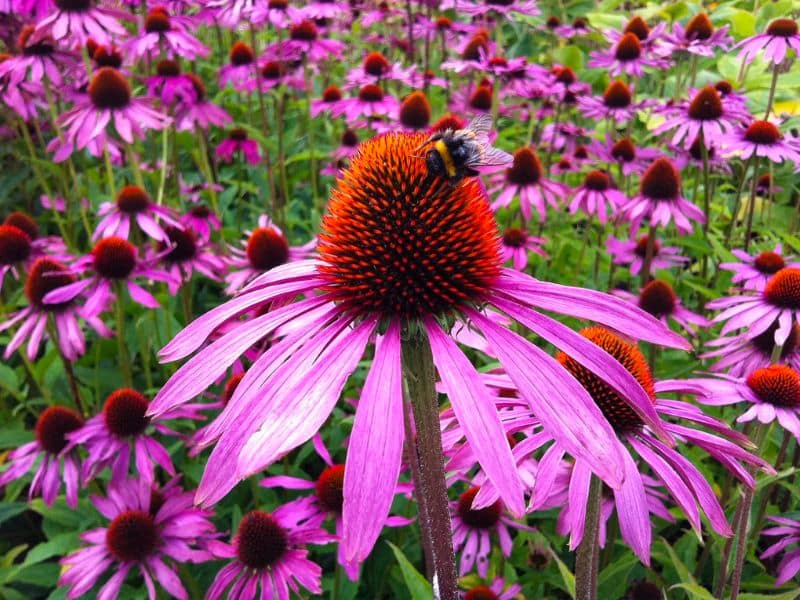
What to Plant with Coneflowers
Echinacea flowers can look striking alongside a wide range of other plants. But if you want to keep your garden vibrant and effortless, then it is always best to grow these plants with companions with similar growing requirements.
These perennial wildflowers are drought resistant and grow their best if positioned in full sun or a light shade area in particularly hot and dry regions. The plants will take well to any soil, but avoid dry or boggy soils. These deer-resistant flowers will flourish in fertile, well-drained soil and shouldn’t be watered too often.
Let’s explore some great companion plants to pair with this perennial plant.
Catmint
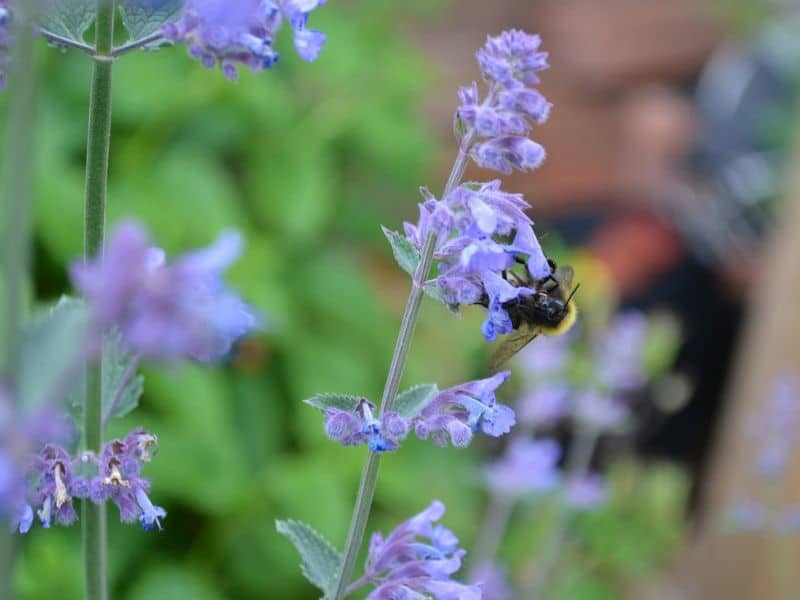
Catmint (Nepta cataria), also known as catnip, catswort, or catwort, is a member of the mint family. It is a great companion to grow with wildflowers because it can repel pests like Japanese beetles, squash bugs, and especially aphids. It produces a powerful scent that deters pests that feed on echinacea flowers.
Catmints will grow well in your flower garden because they love full sunlight and well-drained soil. It will survive in dappled shade but only produce lots of purple flowers if it receives a minimum of 6 hours of direct sun daily.
Catmint tends to be bushier, while coneflowers are taller. The best way to pair these plants is by establishing the catmint in the front of your garden with the taller plants in the background.
The catmints in the foreground will look striking next to the pink flowers and help keep your garden full and lush when your coneflowers die back for the winter season.
Sage

Most varieties of sage (Salvia officinalis), including blue sage (Salvia azurea), mealy cup sage (Salvia farinacea), or Russian sage (Perovskia atriplicifolia) are great for companion planting with coneflowers. This is because their vivid flowers will add lots of color to your garden, the silver-green foliage will keep your gardens full during winter, and they help repel common garden pests.
This companion plant grows well in free-draining soil and can be grown in full sunlight or partial shade. In full sunlight, they will produce lots of purple flowers on tall spikes that can add lots of texture and contrast to your garden bed. These purple tones will also complement the pink flowers very well.
Sage shrubs will grow just about the same height as coneflowers, although there are some shorter varieties. Because both plants are relatively tall, you can easily mix and match them all over the same garden bed so the flowers of your echinacea plants can peek out all over amongst the purple masses.
Butterfly Milkweed
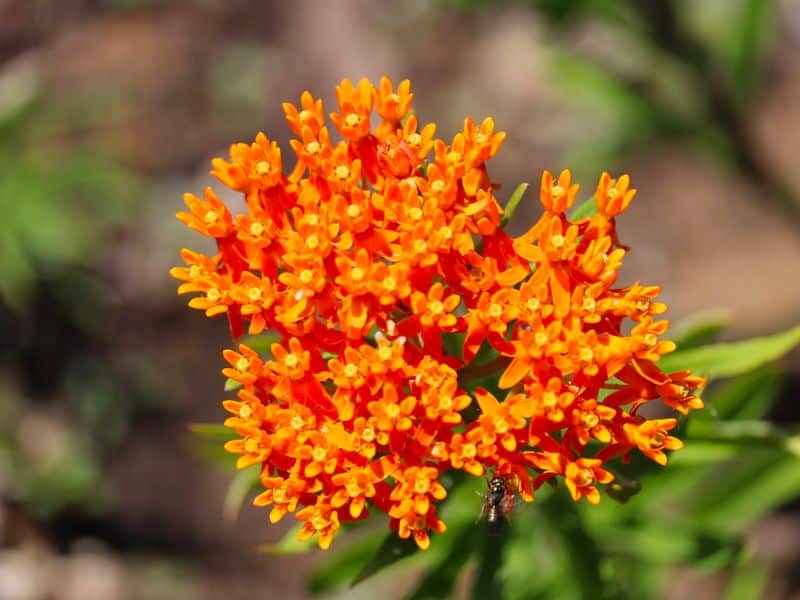
Butterfly milkweed (Asclepias tuberosa) is an interesting plant to pair in your coneflower garden. This flowering plant is called butterfly milkweed because butterflies love these flowers’ bright colors and sweet nectar.
Butterfly milkweed is easy to grow and will flourish in the same full sun and well-drained soil areas that coneflowers prefer. These perennials can continue to produce vivid flowering displays in colors like orange, red, or purple for decades once they are fully established.
Asclepias flowers typically grow up to 36 inches tall and are usually much shorter than coneflowers. The best way to pair these two plant species is to establish your milkweeds in the front of your garden with many coneflowers peeking out amongst the masses of delicate butterfly-luring flowers.
Phlox
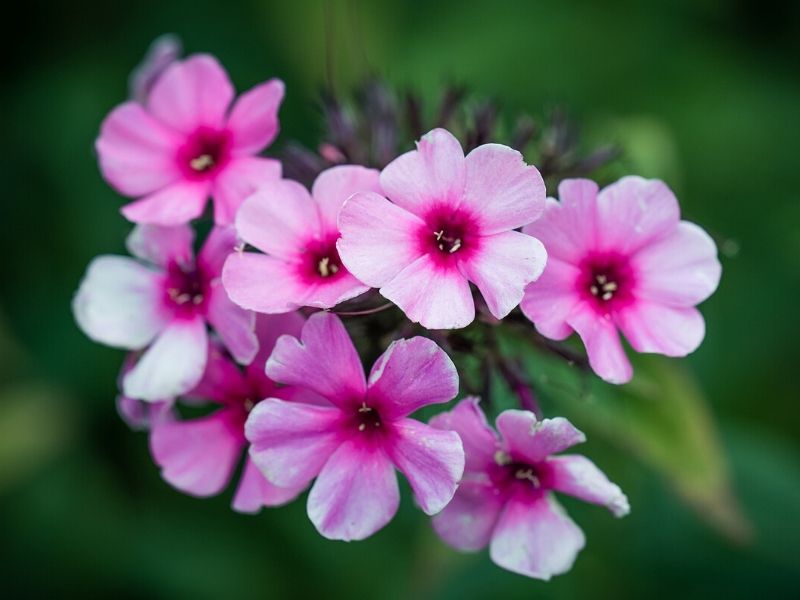
Phlox flowers (Phlox) are a great plant to pair with coneflowers if you want a natural ground cover. This plant comes in many different species and includes colors like pink, red, lavender, purple, orange, and white. We especially recommend blue phlox because the lavender blue tones of this plant will add lots of contrast next to pink coneflowers.
Blue phlox (Phlox divaricata) will attract pollinators like butterflies to your garden, and they are great as garden fillers or border plants. The bushy plants will grow very well in light to medium shade in soil that drains well, and this plant species is drought tolerant.
Because phlox needs a little more shade, it is best to position it around the base of your coneflowers.
Black Eyed Susan

Black-eyed susans (Rudbeckia hirta) will form a striking contrast if they are grown along with pink coneflowers. These plants, with their vivid yellow blooms and black centers, are perfect for butterfly or cutting gardens.
Black-eyed Susans grow very well in full sun but can survive in light shade. These hardy perennial plants should be treated as annuals in colder climates because they will die back during colder temperatures.
These companion plants are of similar height to echinacea flowers and can be mixed all over your garden to create a beautiful display. They, and coneflowers, are perfect-cut flowers that can be used to make striking indoor flower arrangements.
Bee Balm

Bee balm (Monarda) is one of the best companion plants for echinacea because they are incredibly hardy and useful for luring beautiful butterflies to your garden. The plant is also self-sowing and will quickly spread all over your botanical gardens without any additional effort.
Bee balms need at least 6 hours of direct sun daily but can grow in dappled shade. They will fare well where you plant coneflowers because they flourish in well-drained soil in hardiness zones 3 – 9 and are drought-tolerant.
The best way to pair this native American plant is by using it as garden filler or ground cover around your purple coneflowers. The tubular pink flowers look striking when they form a backdrop for your tall coneflowers.
What NOT to Grow with Coneflowers
Purple coneflowers can look striking if you pair them with other companion plants. However, not all plants will grow well in the same sunny and dry areas that these plants prefer. Moisture-loving plant species like ferns, hostas, begonias, and Japanese forest grass will quickly wilt if you add them to the dry garden bed your coneflowers prefer.
Coneflowers can grow well in dappled shade but won’t flower if they don’t get enough direct sunlight. Shade-loving plants, on the other hand, like hydrangeas, ferns, or begonias, will die if they get too much direct sun and, as such, are poor companion plants for echinacea.
Final Thoughts
There are many coneflower companion plants like sage, butterfly milkweed, phlox, catmint, and bee balm that look great, grow well, and will compliment your coneflowers perfectly. We are certain that any of these combinations are perfect for creating a gorgeous butterfly garden or cut flower garden and will help you keep your garden vibrant and appealing throughout spring and summer.
*image by KarlssonPhoto/depositphotos
See more:

